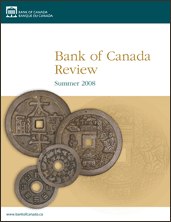Bank of Canada Review - Summer 2008
Available as:
PDF
Cover page
Chinese Coin Charms
The charms on the cover are part of the National Currency Collection of the Bank of Canada.
Photography by Gord Carter.
